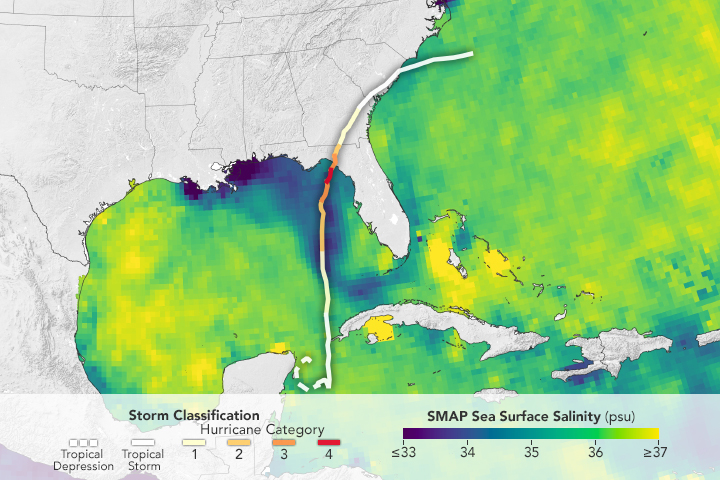
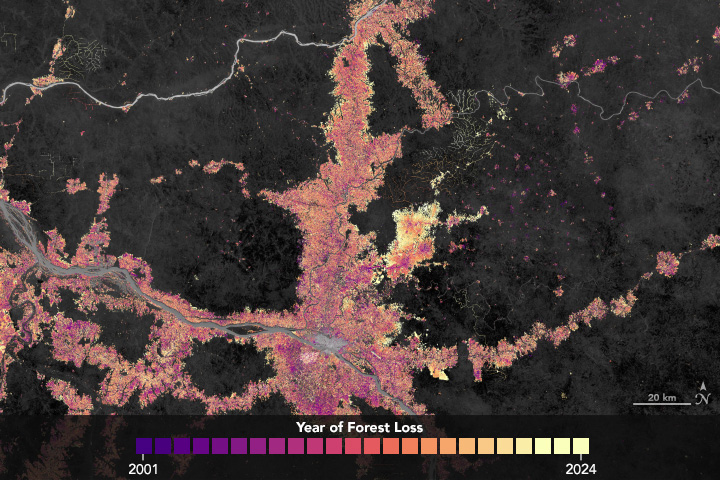

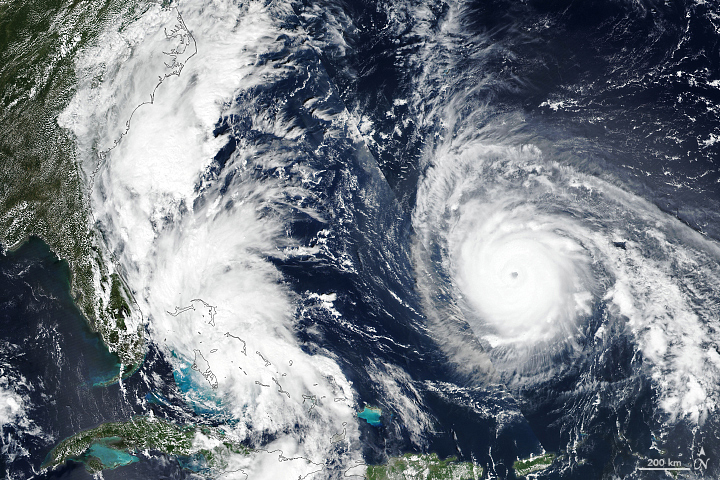
Recent Imagery
You will be directed to the NASA Visible Earth webpage when you select Images by Mission below, or click on the images at right that are randomly generated to represent four out of all possible topics.
You are here
Science Communication Material
NASA's Earth Observing System provides a variety of materials available for download. Feel free to choose a category below:
- Brochures
- Postcards
- Posters
- Science Writers’ Guide
- Mission Brochures
- Fact Sheets
- Calendars
- Booklets
- Lithographs
- Reference and Data Products Handbooks
- iBooks
- Activities
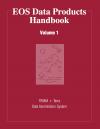 |
EOS Data Products Handbook Volume 1 (Revised 2004) Revised January 2004: This is a "living" document in that the web version is being updated periodically. It is designed to provide you with information about the products available through the EOSDIS system in the TRMM and Terra (formerly AM-1) timeframes. If you already know the product name, it may be found in the summary List of Products beginning on page ix by either the Product ID or the Data Set Name. Both the Product ID and the Data Set Name will direct you to the page number on which you will find the corresponding Product Description and other information. If you are beginning your research into what products are available through the Earth-Sun System Mission (formerly the Earth Science Enterprise), you may choose to investigate the twelve science chapters in this document beginning with the Radiance and Imagery products. Data sets are grouped by these classifications, which are derived from the 24 EOS critical science measurements. Each category provides a framework for understanding the science objectives as well as providing a thumbnail sketch of what the product is designed to do. Investigators may also cross-reference products by their source instrument and archive. That information, as well as page numbers, is provided in the List of Products. This document also contains information about the EOSDIS Distributed Active Archive Centers (DAACs) and the EOS instrument teams. Access information about the DAACs is contained in Chapter Two. Information about the TRMM and Terra instrument teams is contained in Chapter Three. This publication appears in: |
 |
A-Train Fact Sheet Over the next five years, NASA’s ESE plans to launch four satellite missions that will fly in formation with each other and with the Aqua satellite, which has been in orbit since May 2002. Each individual mission has its own objectives and will improve our understanding of aspects of the Earth’s climate. The real advantage of formation flying, however is that the data from the various satellites are synergistic. This is related to the following mission(s): This publication appears in: |
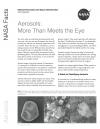 |
Aerosols: More than Meets the Eye You can’t really see individual aerosol particles with your eyes—but you can see the impact they have all around you. Aerosols are extremely important to life on Earth. Every time you see a cloud form, you are seeing aerosols at work. Without them, cloud formation would be next to impossible in Earth’s atmosphere. This publication appears in: |
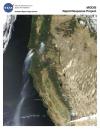 |
MODIS-Rapid Response In mid-July 2002, lightning started a fire in the Klamath Mountains in southwestern Oregon that eventually burned over the state line into California and consumed more than 400,000 acres by late August. The Biscuit fire became one of the largest in the state’s history, threatening not only human life and property, but also three nationally designated wild and scenic rivers and habitat for several species of plants and animals already at risk of extinction. Firefighters also had their hands full with other fires across the state, including the Tiller Complex Fire to the northeast. This publication appears in: |
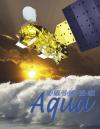 |
Aqua Aqua is a satellite mission aimed at improving our understanding of the Earth/atmosphere system, along with changes occurring within it, through the monitoring and analysis of dozens of Earth variables from a space-based platform orbiting the Earth. Aqua is part of the Earth Observing System (EOS), an international Earth-focused satellite program centered at the United States (U.S.) National Aeronautics and Space Administration (NASA). This is related to the following mission(s): This publication appears in: |
 |
Aqua The launch of NASA’s Aqua spacecraft continued the Earth Observing System (EOS) series of comprehensive satellites to monitor the Earth from a space-based platform. Aqua was so named because it obtains significant information about water in the Earth system including ocean surface water, humidity, precipitation infiltration, and runoff. Data from six Aqua instruments provide continuous, long-term records of the hydrologic cycle around the world, which are combined with data from other Earth-monitoring satellites launched by NASA and other countries. This is related to the following mission(s): This publication appears in: |
 |
Gravity Recovery And Climate Experiment (GRACE) While gravity is much weaker than other basic forces in nature, such as magnetism and electricity, its effects are ubiquitous and dramatic. Gravity controls everything from the motion of the ocean tides to the expansion of the entire Universe. To learn more about the mysteries of gravity, twin satellites named GRACE, short for the Gravity Recovery and Climate Experiment, are being used to make detailed measurements of Earth’s gravity field. This is related to the following mission(s): This publication appears in: |
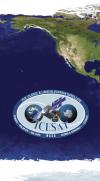 |
ICESat The primary goal of ICESat is to quantify ice sheet mass balance and understand how changes in the Earth’s atmosphere and climate affect the polar ice masses and global sea level. ICESat also measures global distributions of clouds and aerosols for studies of their effects on atmospheric processes and global change, as well as land topography, sea ice, and vegetation cover. This is related to the following mission(s): This publication appears in: |
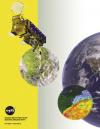 |
Moderate-Resolution Imaging Spectroradiometer (MODIS) The first EOS satellite, called Terra, was launched on December 18, 1999, carrying five remote sensors. The most comprehensive EOS sensor is MODIS, the Moderate Resolution Imaging Spectroradiometer. MODIS offers a unique combination of features: it detects a wide spectral range of electromagnetic energy; it takes measurements at three spatial resolutions (levels of detail); it takes measurements all day, every day; and it has a wide field of view. This is related to the following mission(s): This publication appears in: |
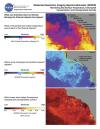 |
MODIS Monitoring Sea Surface Temperature, Chlorophyll Concentration, and Phytosynthetic Activity A sensor orbiting the Earth aboard NASA’s Terra and Aqua satellites is now collecting the most detailed measurements ever made of the ocean’s surface environment. Like a sophisticated thermometer in space, the Moderate Resolution Imaging Spectroradiometer (MODIS) can measure sea surface temperature every day over the entire globe. This publication appears in: |
